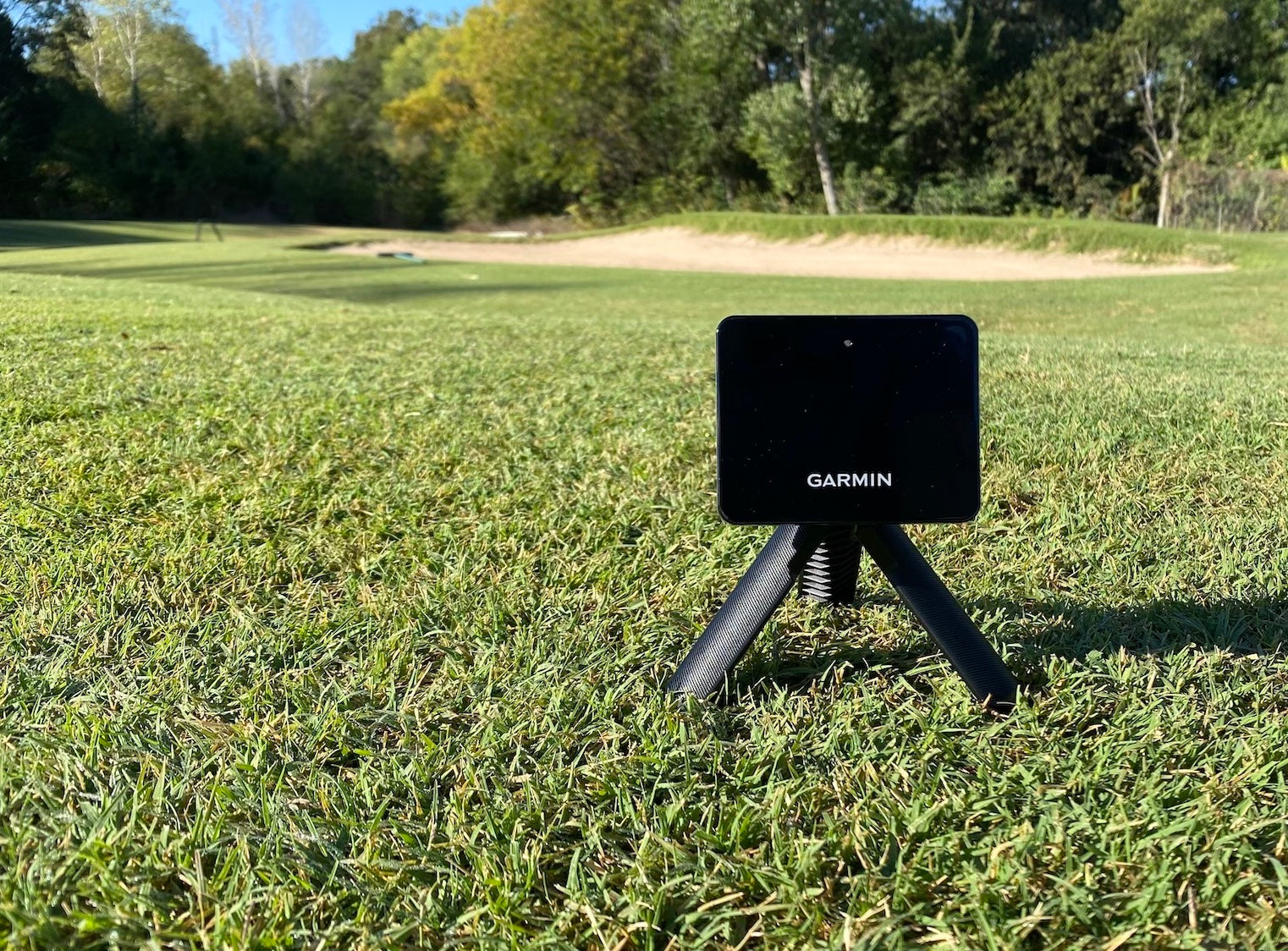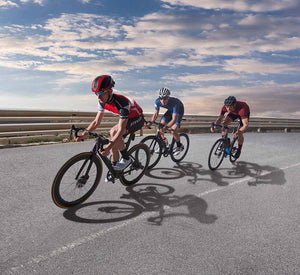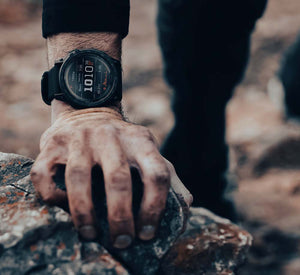
Garmin Approach R10 2024 Review: Is It Still the Best Golf Launch Monitor Under $1,000?
More golf launch monitors have come on the scene in the under-$1,000 category. Is the Garmin Approach R10 holding its own? Our golf reviewer, Marc, weighs in with all the details!
In the last two years, things have gotten absolutely crazy in the under-$1,000 golf launch monitor category. And it’s all thanks to the Garmin Approach R10.
This is the device that set the market for affordable, accurate, simulator-compatible golf launch monitors. Before the R10, you either had to spend a ton of money or accept very limited accuracy and reliability. Now, almost all of us can (and should) consider adding one of these incredible gadgets to our golf life.
But which one to get?
When the Approach R10 debuted in 2021, it stood alone as the undisputed top dog in the sub-$1,000 category. But competition has arrived. Similarly priced launch monitors like the Rapsodo MLM2PRO and Swing Caddie SC4 have suddenly turned what was a no-brainer decision into a legitimate debate.
So, two years after its launch and with competitors hot on its heels, is the Garmin Approach R10 still relevant?
It may have been impressive when it first came on the scene, but are its features and performance still as awe-inspiring?
And what R10 updates have come along since its launch?
Those are the things I wanted to explore two years into the Garmin R10 lifespan. As usual, I put the R10 through the wringer. There was no letting up as I tested indoors, outdoors, on the range, and on the course, all in pursuit of finding the truth about the R10’s legitimacy in 2023. Because, remember, golf tech evolves rapidly. Two years is a long time. We need to know if the R10 is aging gracefully.
So, if you’re considering the Garmin Approach R10 but maybe are still on the fence, this review is for you. I’m going to do my best to give you the answers to your most important questions.
Here we go!
Unboxing and Setting up the Garmin Approach R10
Garmin’s always struck a nice balance between simplicity and elegance with their product packaging. And I’d say the R10 fits right into that brand identity. Everything is very straightforward. It’s classy without being totally luxurious.
The first thing that jumped out to me upon unboxing was how small the unit itself is. It really is about the size of a deck of cards. It’s kind of mind-blowing when you think of how something so small can record so much data. I also absolutely love the look of the R10. The all-black device coupled with the squat all-black tripod looks clean and cool. Looks-wise, I don’t think the R10 has a rival in the under-$1,000 golf launch monitor category.
The second thing that hit me was how big the carrying case is. Don’t get me wrong: I was extremely pleased to see a carrying case. I think it’s a critical component for a golf launch monitor, and it bums me out when products like the Swing Caddie SC4 and SkyTrak+ don’t come with one.
But in the case of the Garmin R10, the carrying case is like 10 times larger than the actual device. Yes, there is space to carry the small tripod, the USB cables, and a phone clip, but the size of the thing is over the top. It actually is a deterrent because it takes something that is so small and portable and makes it so that fitting this case into your golf bag isn’t entirely simple. I’d much prefer a case that is a bit more sleek like what you get with the Rapsodo MLM2PRO. But, overall, that’s a pretty minor gripe.
The next thing that caught my attention was the included phone mount. This is an absolutely awesome addition that I wish more companies included with their launch monitors. Garmin gives you a two-piece clip/mount solution that allows you to attach your phone to something like your golf bag. This way, when you pair the R10 to the app, you can easily and conveniently view your data in real-time. With most launch monitors, you’re always having to set your phone down on the ground or lean it up against something. It’s never as convenient as being able to clip it somewhere closer to eye level so that you can review each shot immediately without bending over. I love this simple accessory.
As for setup, I honestly don’t know how it could get any easier. I’m not kidding. The most time-consuming parts are downloading the Garmin Golf app and registering an account. And neither of those things takes more than a couple of minutes.
After that, all you have to do is turn the R10 on and launch the app. The first time you do so, you’ll need to hit a button to sync the launch monitor with the app. After that, it will happen automatically each time you power up. It is incredibly simple. For someone who can get frustrated easily by cumbersome electronic setup processes, getting started with the Approach R10 is a dream. I’m confident in saying that anyone can do it without any issue. And if you do run into problems, Garmin has a robust setup tutorial section on their website. Trust me, you won’t need it.
Garmin Approach R10 Data Metrics
Before we jump into using the Approach R10, let’s talk through what kind of information it can deliver. Because it’s a lot. And when you put it in the context of a price point of only $600, it’s downright unbelievable!
You get the following 20 different metrics:
- Total distance
- Carry distance
- Total deviation (how far offline you hit it) measured in degrees
- Total deviation measured in yards
- Carry deviation in degrees
- Carry deviation in yards
- Club speed
- Ball speed
- Launch angle
- Launch direction
- Club face angle
- Club path
- Backspin
- Sidespin
- Spin axis
- Spin rate
- Face to path
- Attack angle
- Smash factor
- Apex height
Now, this is a Doppler radar golf launch monitor. And because it does not include a photometric system, most of the data it spits out is calculated by an algorithm. So, the device is actually only measuring club speed, ball speed, launch angle, and launch direction. Based on those measurements, it predicts what the rest of the numbers would be.
So, can a golf launch monitor that produces 20 points of data but is only actually measuring four of them be accurate? Keep reading and I’ll share my findings.
Testing R10 Accuracy Indoors and Outdoors
The first thing that I like to do when I try a new golf launch monitor is bring it to the driving range. That’s because not all of these devices work very well outdoors. Some units, like the SkyTrak+, are limited to only hitting off of mats. And many of these devices aren’t very portable. I think outdoor use is an important consideration for many golfers interested in these products. I know that I’d want to be able to use my golf launch monitor both at the range and in an indoor studio.
As noted above, the Garmin Approach R10 is definitely portable, although it’d be that much more so if the carrying case was a more functional size. Still, bringing it back and forth from your house to the range is definitely doable.
After turning on the R10, launching the app, and connecting the R10 magnetically to the tripod, you’ll need to align the device with your target line. Measure to 6 to 8 feet from behind your ball, and place the tripod feet on a level surface. On the top of the R10, there is a red line that you can use to visually line up the launch monitor with your golf ball and target line.
Aligning the R10 isn’t quite as simple or precise as with the Rapsodo MLM2PRO. That launch monitor includes built-in cameras that allow you to confirm if you’re aligned. On your phone or tablet, you’ll see an image that includes a target line, allowing you to make sure the device is aimed precisely. With the R10, you’ve got to eyeball it. I did find that using an alignment rod to trace the line from the R10 to my golf ball was helpful. And it is important that you take these few seconds to nail the alignment as otherwise you won’t be able to trust the data. PlayBetter sells an inexpensive R10 alignment stand that makes this process simple.
Once you’ve powered up and aligned the R10 and launched the Garmin Golf app, you're ready to record data or play a simulated round. The R10 light will flash green when it’s ready to read a shot.
When this launch monitor was initially released, there were some issues with club waggles. Any kind of club movement before the shot itself would prematurely engage the R10 and cause it to miss the actual shot. That issue has been solved. While I don’t normally have much of a waggle or forward press in my pre-shot routine, I experimented with adding some movement just to test the device. No issues whatsoever.
I was extremely pleased and impressed with how consistently the R10 picked up shots. This is inexact, but in all the time I’ve been using it, I think it’s missed less than 3 percent of my shots. That’s excellent compared to other units, including those in this same price category.
Indoors, I compared the Approach R10 to the Foresight Sports GC3, a confirmed-as-accurate benchmark that serves as a great reference point for testing these less-expensive golf launch monitors and simulators. If it can hang with the GC3, you can bank on the numbers you’re getting.
And I’ve got to say that the R10 was extremely impressive… to a point.
Distance numbers — both total and carry — were generally spot on, both compared to the GC3 and outdoors as measured with a laser rangefinder. There was an increasing bit of disparity as you got to the longest clubs in the bag. For example, with shorter clubs, distances were identical or within 1 or 2 yards as compared to the GC3 and rangefinder. But with the driver, they were occasionally off by as many as 8 or 10 yards. So, it’s not perfect. But overall, and for $600, I think it’s quite good.
Ball speed and club speed were similarly very accurate. Smash factor, too.
It’s worth noting that when the R10 first launched, there were some complaints and stories of wild inaccuracies. Thankfully, a series of software updates have addressed these issues and significantly improved overall accuracy. The R10 is now very much in line with the current accuracy standards for a device in this price point.
The biggest remaining accuracy issue for the R10 has to do with spin numbers and the resulting ball flight and deviation. To nail the spin numbers, Garmin recommends using special Titleist RCT golf balls. And let me tell you, without them, I don’t trust the spin numbers at all.
This is a drawback, to be sure. Using expensive special golf balls, even indoors, is never ideal. And, of course, you’re not going to use them outdoors where you can’t retrieve them. Another thing is that Garmin doesn’t include any of these RCT balls with the purchase of an R10. The Rapsodo MLM2PRO, on the other hand, also requires the use of special balls to get accurate spin data. But at least they give you a three-pack when you buy the launch monitor.
The problem with not being able to reliably record accurate spin data is that it has a trickle-down effect. Because the unit isn’t accurately measuring spin, it really doesn’t know how far offline the ball is flying or in what direction it’s curving. In my testing, I was seeing both total and carry deviation numbers that were consistently off by about 10 or 15 yards compared to the Foresight Sports GC3. That is quite considerable. So if I hit one poorly that the GC3 read as 15 yards to the right of my target, the Garmin might report it as only 4 yards to the right. And the ball flight tracer would indicate the same. Or if I hit one that was 5 yards to the left of the target, the R10 would report it as 5 yards to the right. Not great.
This is an issue we’ve seen to varying degrees in most, if not all, of the under-$1,000 golf launch monitors. So we can’t knock the R10 too hard. After all, what do you expect for $600? The fact is, you’re getting so much reliable data that you might be willing to live with the data points that aren’t quite as spot on. Also, these issues are generally moot when you use the RCT golf balls.
One thing to note: When using the device indoors, it’s important that you set the Garmin Approach R10 up so that the ball height is consistent with what it would be outdoors on the ground. That means, if you have a raised hitting mat, you’ll need to likewise raise your R10 to match. For my setup, I ended up using a box of golf balls to achieve the correct height.
Navigating the Garmin Golf App
One of the best things about the Approach R10, and really all of the Garmin golf and fitness products, is that the app is so intuitive and easy to operate. Everything is laid out in a functional way that just makes sense.
When you launch the app, you’re greeted with a simple menu that makes it easy to understand your options. You’ve got four different virtual driving ranges to choose from for practice sessions. There are links to four different third-party simulator software connections for virtual rounds. You can sign up for a weekly tournament where you’ll compete against other golfers from around the world. And you have the choice to play Garmin’s Home Tee Hero, which allows you to play pretty much any golf course in the world in an animated, video-game-like virtual layout.
We’ll talk more below about the Garmin Golf Membership subscription that’s required to unlock some of this functionality, but for now, just understand that the layout of the menu in the Garmin Golf app makes it easy to choose how you want to use the R10 for any given session.
One moderate drawback is that, while you’re hitting shots, you can only see three data points at a time on the page or screen that is tracking your ball flight. You can customize which three metrics you want to see, meaning you can choose a combination like “carry distance,” “ball speed” and “smash factor.” But to see the rest of the data, you need to scroll to the next page. I say this is a drawback because it would be nice to be able to see more data at a glance without having to touch your phone or tablet. However, compared to the Rapsodo MLM2PRO, the Garmin device is doing quite well. With the Rapsodo, you’re also limited to only three data metrics, but you can’t view the rest of the data until you end your session. With the R10, you can at least see everything you’d want within any given session.
Another aspect I really like is the “Ball Impact” screen, which adds a visual element to the data, showing you the angle of your clubface at impact, the spin axis, the launch direction, and the launch angle. For visual learners, it’s nice to complement the numbers with some images to help us understand exactly what’s going on with our golf swings.
You do also have the option to pair video of your golf swings with the app. By setting up your phone to record your swing, you can store and analyze video right in the Garmin app. While this is cool, it’s not quite as cool as with the Rapsodo MLM2PRO. With that device’s built-in cameras, you get that video footage automatically with each and every shot.
And yet another advantage of the Garmin app is that Garmin, of course, has a large suite of products. If you own more than one of them — say a Garmin golf watch along with the R10 — you can store all of your golf-related data in one app. It makes it extremely convenient to see what’s going on with your game all in one place. For that reason alone, I think that if you’re someone who is already using a Garmin product, the Approach R10 is likely to make more sense for you than one of its competitors.
Garmin Approach R10 Simulator Compatibility
One area where the R10 jumps ahead of competitors like the Rapsodo MLM2PRO and Swing Caddie SC4 is that it offers more flexibility in terms of simulator compatibility.
The R10 works with TruGolf E6 Connect, Awesome Golf, the Golf Club 2019 and Creative Golf 3D. That means you’ve got a nearly unlimited choice of simulated golf courses available. Granted, each third-party simulator software is going to come with its own subscription cost. But having options is really key. Who wants to be locked into a limited and predetermined number of golf courses?
What’s really awesome is that you get five free iOS-only courses through E6 Connect when you purchase an R10. That means simulator golf right out of the box if you own an iPhone!
As far as using the R10 as a simulator indoors, it works incredibly well, but you’ll need ample room space. The R10 should be set up between 6 and 8 feet behind the ball, and at least 8 feet in front of an impact screen or golf hitting net. That means you’ll need at least 14 feet of room depth. That’s not an option for everybody, in which case you may need to consider a more expensive launch monitor like the Bushnell Launch Pro, Foresight Sports GC3 or SkyTrak+.
If you’re going to use your R10 as a simulator (and why wouldn’t you?!), I highly recommend using the Titleist RCT golf balls. Playing simulated rounds without them can lead to some frustration as ball flights just won’t be accurate enough to realistically simulate a real round of golf.
Garmin says that the RCT balls improve spin rate accuracy by up to 30 times. I think that’s about right. They also say that carry distance accuracy is improved by up to 50 percent. But, honestly, I was seeing pretty accurate carry distance results even with normal golf balls.
As is the case with most budget-friendly golf launch monitors, simulated putting is not an option with the Approach R10. Instead, if you’re outside of 12 yards from the hole, it’s an automatic three-putt. If you’re between 3 and 12 yards, it’s a two-putt. And anything inside of 3 yards is a tap-in one-putt.
The Garmin Golf Membership Subscription Plan
Well, it wouldn’t be golf tech in 2023, if there weren’t subscriptions to discuss. And Garmin is not different from most of its competitors. To get everything, you’ve got to pay more.
For $99.99 a year or $9.99 monthly, you get the Garmin Golf Membership. This allows you to do things like play the more than 42,000 Home Tee Hero virtual courses, record and store video clips, and get green contour data.
While spending an extra hundred bucks a year is an annoyance, at least it’s not $200 per year, as is the case with the Rapsodo MLM2PRO, one of the R10’s chief competitors. Personally, I recommend biting the bullet and upgrading to the Garmin Golf Membership. It’s worth it just for the Home Tee Hero access.
Should You Buy the Garmin Approach R10 Golf Launch Monitor?
Finally, the moment of truth. Is the Garmin Approach R10 worth your $600 (plus subscription)?
Let me make this simple: Hell yes it is!
BUT… If you’ve got indoor space issues, this isn’t going to work. If spin rate data is critical to you and you don’t want to mess with using special golf balls, then this isn’t the launch monitor for you. If you want to include putting in your simulated rounds, you’ll have to look elsewhere. And if you want swing video without having to use your phone or tablet to capture it, you won’t be happy with the R10.
Those issues aside, I think the Garmin Approach R10 is an excellent fit for most golfers who are looking for an option that doesn’t break the bank. That goes double for people who are already familiar with the Garmin ecosystem.
Has the R10, now two years past its launch, stood the test of time? It absolutely has. Even with competitors on the scene, this golf launch monitor holds its own as a very strong candidate for the best golf launch monitor under $1,000 in 2023.
About PlayBetter Golf Reviewer Marc Sheforgen
Marc Sheforgen is a golf writer whose passion for the game far exceeds his ability to play it well. Marc covers all things golf, from product reviews and equipment recommendations to event coverage and tournament analysis. When he’s not playing, watching, or writing about golf, he enjoys traveling (often golf-related), youth sports coaching, volunteering, and record collecting.










